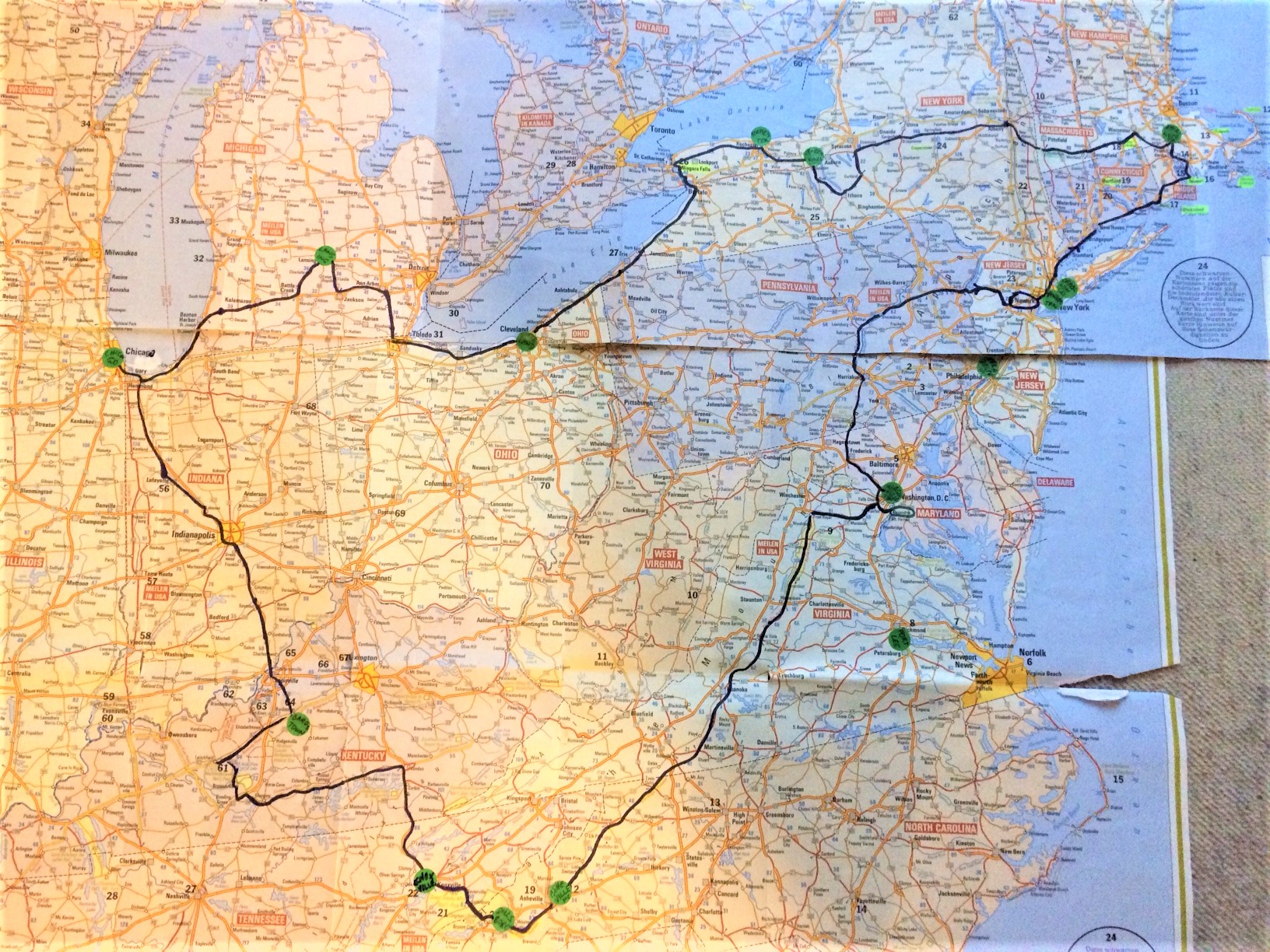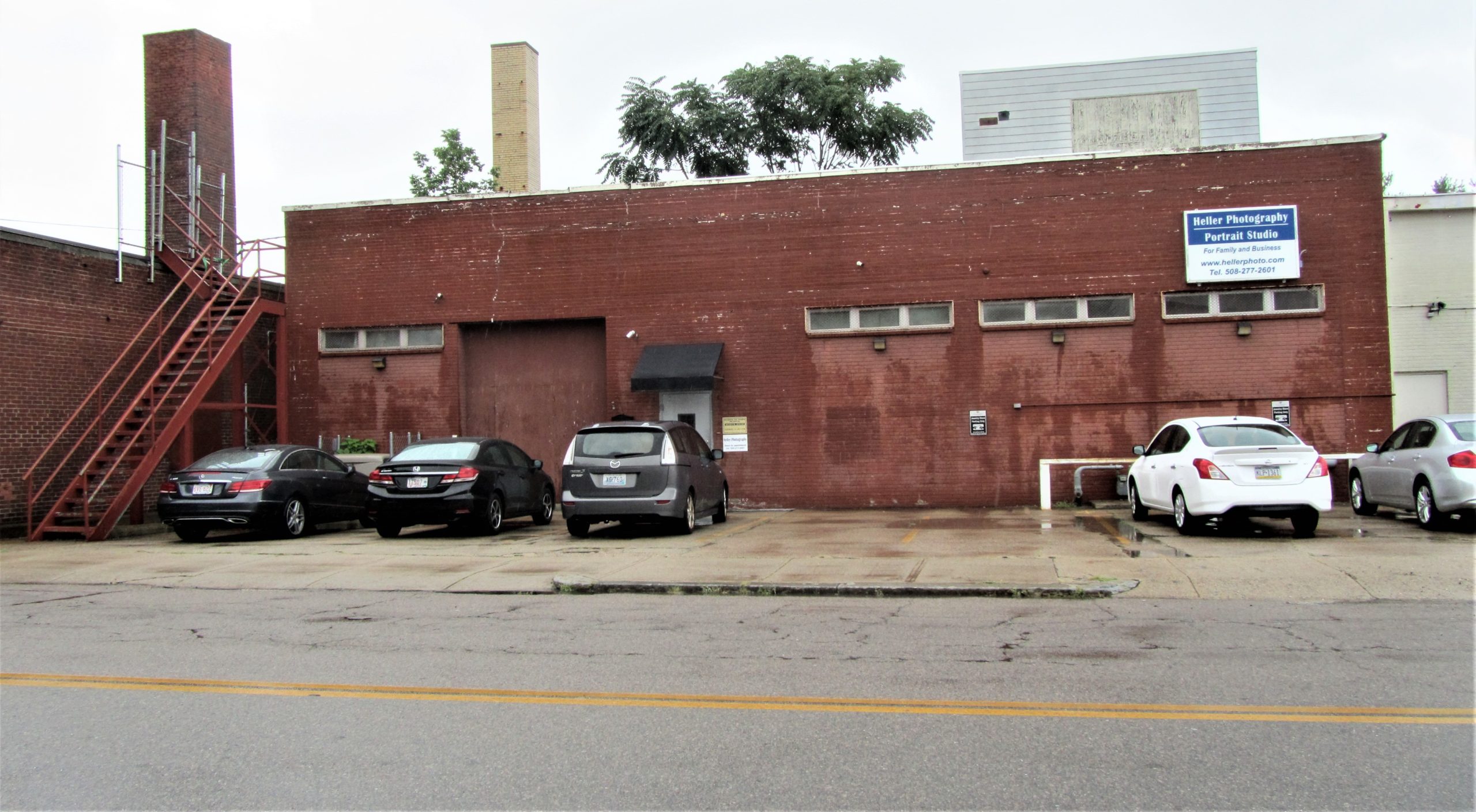…to airports and shopping-malls, to art museums and little galeries, to former farm houses and factories, to shops and offices – in short: to ordinary and extraordinary locations that are housing women’ s museums. It is 2018 and my friend Resi and I are heading for women’s museums in the East and the Middle West of the United States of America. They are the ones who guide us on our way. Besides, of course, we want to visit touristic spots and attractions along our route. After 4 weeks, 4 546 miles and 15 federal states, we note down: 14 women’s museums, including a lot of wonderful experiences, a big increase in our knowledge and many interesting and friendly people we met. Thematically we delve into various topics, from suffragettes and the women’s right to vote, to women in air and space, civil war, basketball, women of the Appalachian Region, artists…
Come with us on an inspiring journey through American women’ s history.
Here we go!

The route of Marianne Wimmer to the women’s museums in the USA
We start off from Newark Airport heading to Attleboro via Interstate 95. As the driver, I am a bit nervous. I know that my first challenge will come soon. It means to cross New York City in the North, via the Cross Bronx Expressway with its uncountable exits. Slowly, very slowly, stop and go – traffic jams time and again. It is a nerve-racking endeavor. But after three hours I proudly call out: “We did it!” I am really longing for roads with less traffic now. But whatever option we try – the Merritt Scenic Parkway or Highway No 1 – it is the same dense traffic everywhere. Thus, we repentantly drive back to Interstate 95 that turns out to be the best way to get forward, even though it is also fully packed with cars. Driving through the States – I remember driving pleasantly and with low speed through beautiful scenery. Maybe, it is the densely populated East of the US that makes the difference? Maybe, it is the long time that has passed since my last time driving here (1980/1990/2008)? Maybe, looking back always means to see things through rose-colored spectacles? Whatever. Nobody seems to care about speeding any more. Even heavily rain does not reduce speed. Only a flooded street ahead is accepted as a signal for driving more slowly. Good old America, where are you? For Resi and me it still is fun to drive without GPS. We rely on maps to get by. A good road atlas in our pocket normally is sufficient, accompanied by hints on the websites of the museums how to find their locations. And for me, as the driver, a living navigation system next to me in the car, named Resi, who is able to read road maps and gives me advice. In the US it is standard on highways and interstates that every exit is signed out well. The only problem that occurs from time to time is, to search for an address without a city map. In this case, even we leave the dinosaur mode and switch to Google maps.
We make our first stop in Mystic, a picturesque village, rebuilt after a whalers’ settlement of the 19th century. In the early afternoon we reach Attleboro, where we want to visit the first women’ s museum on this trip. According to its website and to the answer of my e-mail, it should be opened on Saturdays from 11:00 to 16:00:

Women at Work Museum, Attleboro, USA
Women at Work Museum
35 County Street
ATTLEBORO, MASSACHUSETTS
www.womenatworkmuseum.org
I am shocked. The entrance door of the museum is locked. But I know that it is connected with the jewelry store next to it, the “Attleboro Jewelry Makers“. Full of hope that the locked door is a misunderstanding, we enter the shop and listen to the shop assistant: ”Sorry, but you cannot visit the museum now, because it has to move and will be revised. All you can see now are the boxes and cartons in the back. But if you are not in a hurry, you may speak to Nancy Young later on. She is the owner of the jewelry store and the founder of the museum. In the moment she is engaged. You see her over there with clients.” That was a close shave! In that moment she serves customers in great detail and responds to them in a very friendly manner. By watching her, you may feel her personal involvement and dedication to her work. Later on she takes her time talking to us in the same pleasant way. Proud about her family tradition, she says: ”We design, produce and sell jewelry in the 7th generation. Nowadays, with my mum, who is 96 years old, 5 generations are living at the same time. “Nancy Young mentions that the experiences of women within her family about generations, was a very essential motive for her to found a women’ s museum: ”Though women were innovative and made great contributions for setting up the business and for its success, they had to hide their names behind the men involved. For example, they were not allowed to be named officially as the owners. Even I once used a male pseudonym to place a product on the market. By the way, I opened my first shop at the age of 26.“
Her engagement in women affairs is not confined to her family. It is also effective in her business. Out of her own experience as a working mum she knows what it means for a mother to care for the kids and go to work. In her company she has an eye on this special situation of women and tries to adapt the working hours so that they are able to earn money and to care for their families. With self-confidence she states: ”Out of my position I set up the rules here, even if male associates mean that this is not possible.“ Her attitude to show consideration for the living conditions of others is remarkable. Especially women in leading positions often forget the hard ways of living other persons of their own sex have to face. The reasons for it are not only found in the women themselves, in their good or bad characteristics. Women grow up in a patriarchal system and from childhood on they are trained how to get along best within these structures. No wonder, that they behave according to it.
In addition, Nancy Young supports young female persons and juvenile adults deriving from poorer families. She offers them the opportunity to practice in her company: ”Especially for them it is very important to get to know different kinds of branches, like marketing, design, production or selling. They should get the chance to figure out whether they like it or not. And, maybe, they figure out that they are talented or gifted in a field or that they feel compassion or fun in doing it.“
“Wherever you go: Your job is, to take one, two women with you. If you don’ t do that, I don’ t care, where you go.“ – Gerda Lerner (1920 – 2013), American historian and author, 2000
Then Nancy Young turns to the pictures on the walls in the jewelry store, which show scenes from the beginnings of the jewelry branch in the region. One of them especially triggers her annoyance: ”What strikes you when you look at this picture? Look at the women! You only can see their back view and – they are put to the second row, in the rear of the picture. They were not respected as important at that time, they were used as accessory figures by the painter. In the foreground and in general view – of course, working men.“
“Men generally are overestimated.“ – Maren Kroymann (*1949), German actress, cabaret artiste and singer
In the end Nancy Young talks about her ideas for the revised museum in its new location. In a special part of it she wants to exhibit the model railway collection of her husband who passed away shortly. He collected railways from the time of the Civil War (1861 – 1864) onwards. “With this exhibition I want to attract families to visit the museum and I want to set up a memorial for him”, she explains.
How would our world look like if more women like her had a say in it. For me she would be a dignified candidate for the “National Women’ s Hall of Fame“ (You will read about this in my next blog about Seneca Falls).
Although we could not visit the Women at Work Museum, we leave Attleboro inspired and eager to visit the museum on our next trip to the US.
Previous article: China National Museum of Women and Children
Coming up next: National Women’ s Hall of Fame, Seneca Falls / New York State
Written by: Marianne Wimmer, collector of women’ s museums